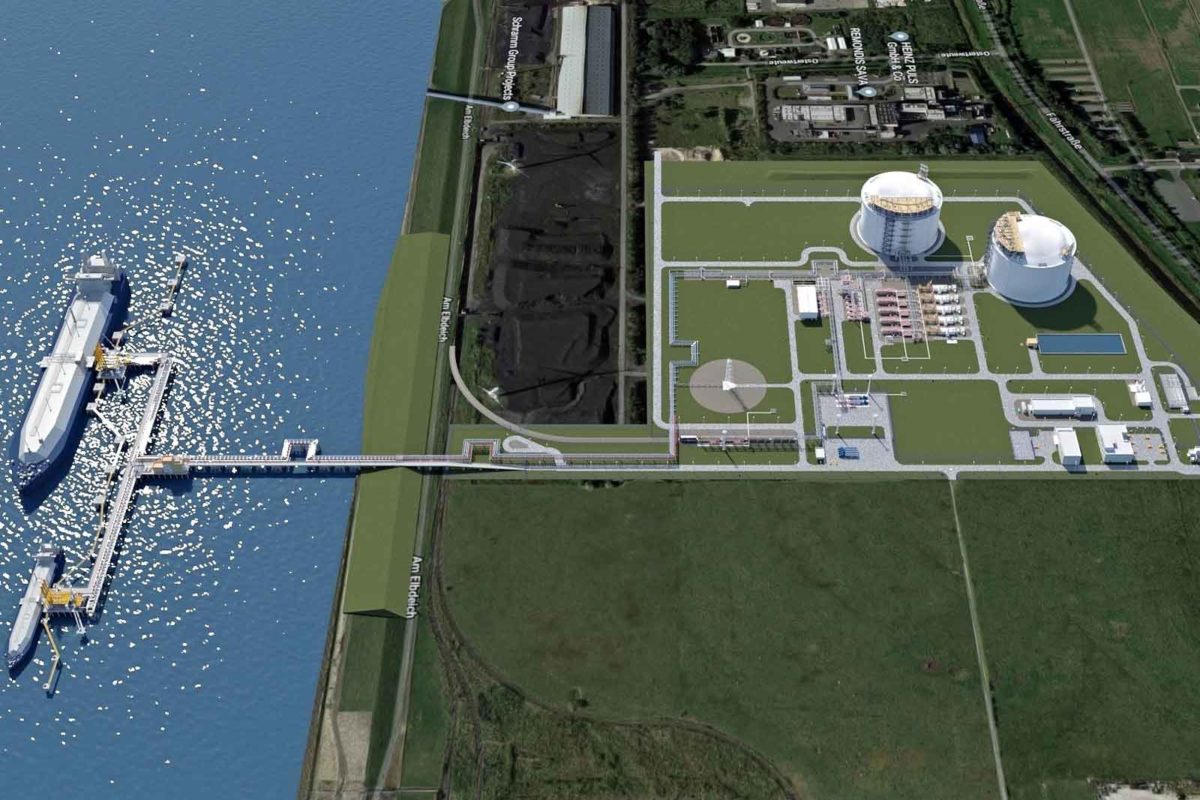Australia and Germany are not wasting time in the race for the green hydrogen economy. The two nations shook hands on an agreement for a joint feasibility study into green hydrogen production and trade back in September 2020, a consortium study known as HySupply, led by the University of New South Wales (UNSW) to test the viability of a renewable energy-based hydrogen supply chain between the countries.
Today it can be seen that HySupply is not wasting any time either, after RWE Supply & Trading and Australian hydrogen project developer The Hydrogen Utility (H2U), have signed a Memorandum of Understanding (MoU) toward the aim of transporting green hydrogen as ammonia from H2U’s Eyre Peninsula Gateway Project in South Australia, to Germany’s LNG Terminal in Brunsbüttel, where RWE intends to book capacity.
H2U is looking to build a 75 MW electrolysis plant at the South Australian location, a plant big enough to supply 40,000 tonnes of green ammonia annually. According to H2U this is only an initial stage however, with plans to expand the plant’s capacity to 1.5 GW of electrolysis.
“H2 is the perfect long-term solution to decarbonise industry, aviation and the transport of heavy goods,” says Javier Moret, global head of LNG at RWE Supply & Trading, “Australia is one of the countries that has excellent conditions to produce green hydrogen – low cost of production and a stable framework. As a globally active trader of commodities, we have a lot of experience with shipping energy carriers – including Australian LNG – around the globe and see ourselves as a facilitator for global hydrogen trading.”
H2U CEO Attilio Pigneri, said the possibilities for the partnership are no less than Germany’s and Europe’s future. “We see the trading of green hydrogen to Europe being fully decarbonised using green ammonia as the shipping fuel of the future,” Pigneri said.
Neither party is a stranger to big projects or big investments. RWE’s renewables outfit is behind the 220 MW Limondale Solar Farm in south-west NSW. And H2U has already attracted investment from Japan’s Mitsubishi Heavy Industries, Japan being another key offtaker market for Australia’s future green hydrogen exports.
Of course, South Australia is not the only Australian state in the race to export green hydrogen to Germany. Back in December 2020, Western Australia hosted an inaugural roundtable with some of the two nations’ biggest industry hitters in an effort to further discuss opportunities for collaboration.
This content is protected by copyright and may not be reused. If you want to cooperate with us and would like to reuse some of our content, please contact: editors@pv-magazine.com.









2 comments
By submitting this form you agree to pv magazine using your data for the purposes of publishing your comment.
Your personal data will only be disclosed or otherwise transmitted to third parties for the purposes of spam filtering or if this is necessary for technical maintenance of the website. Any other transfer to third parties will not take place unless this is justified on the basis of applicable data protection regulations or if pv magazine is legally obliged to do so.
You may revoke this consent at any time with effect for the future, in which case your personal data will be deleted immediately. Otherwise, your data will be deleted if pv magazine has processed your request or the purpose of data storage is fulfilled.
Further information on data privacy can be found in our Data Protection Policy.